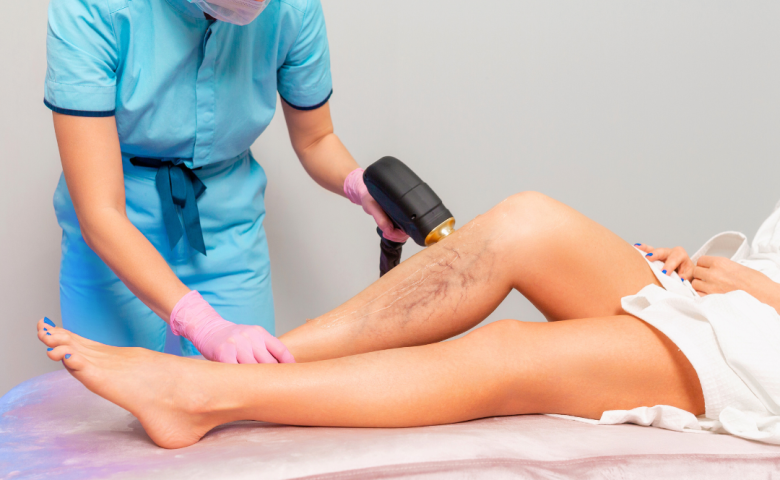Living with Chronic Hemorrhoids: What Hayward Residents Need to Know (But Nobody Wants to Talk About)
Let’s face it—hemorrhoids aren’t exactly dinner table conversation. But if you’re dealing with chronic itching, pain, or rectal bleeding, you’re far from alone. Hemorrhoids are one of the most common (and least discussed) health issues in the U.S., affecting nearly 1 in 20 Americans—and over 50% of adults over 50.
At Prospero Vascular & Interventional (PVI) in Hayward, we believe it’s time to talk about it. With minimally invasive treatments and a judgment-free approach, we help patients get real relief—without surgery or embarrassment.

What Are Hemorrhoids?
Hemorrhoids are swollen blood vessels located in the lower rectum or around the anus. There are two types:
- Internal Hemorrhoids: Inside the rectum, usually painless but may cause bleeding.
- External Hemorrhoids: Under the skin around the anus—can itch, hurt, and even clot (thrombosed).
When they stick around for weeks or come back regularly, you’re dealing with chronic hemorrhoids.
Symptoms of Chronic Hemorrhoids
Whether mild or severe, chronic hemorrhoids can cause:
✔ Itching or burning in the anal area
✔ Bright red blood on toilet paper or in the bowl
✔ Pain or discomfort while sitting or during bowel movements
✔ A feeling of fullness or pressure
✔ A lump or swelling near the anus
Pro tip: If your symptoms persist more than a week or worsen, it’s time to see a doctor. Chronic doesn’t mean “normal.”
Common Causes and Risk Factors
Most hemorrhoids develop from increased pressure in the lower rectum, and several lifestyle factors contribute:
- Straining during bowel movements (a big one!)
- Chronic constipation or diarrhea
- Sitting too long—especially on the toilet
- Pregnancy and childbirth
- Obesity or sedentary lifestyle
- Low-fiber diets
Not-So-Common (But Important) Hemorrhoid Facts
🧻 The Toilet Isn’t a Lounge Chair
Sitting on the toilet too long (hello, phone scrolling!) puts excess pressure on rectal veins. Aim for short, efficient bathroom visits—your hemorrhoids will thank you.
🌿 Witch Hazel Isn’t Just for Witches
This natural astringent helps soothe itching and reduce swelling. Look for alcohol-free versions in wipes or creams.
💧 Hydration Helps More Than You Think
Drinking more water softens stools and makes bowel movements easier—less pushing, less pain.
🥬 Fiber Is Your MVP
Most Americans only get half of the recommended daily fiber. Up your intake with fruits, veggies, beans, and whole grains to keep things moving.
📚 They’re Older Than You Think
Hemorrhoids were described as early as 1700 BCE in ancient Egyptian medical texts. Even the pharaohs had to deal with them.
Self-Care Tips That Actually Work
Here are expert-approved strategies to ease chronic symptoms and reduce flare-ups:
1. Upgrade Your Diet
Add high-fiber foods and stay well-hydrated to avoid straining. Fiber supplements (like psyllium husk) also work wonders.
2. Use a Sitz Bath
Soak your bottom in warm water for 10–15 minutes a few times a day. It soothes irritation and promotes healing.
3. Don’t Delay the Call of Nature
Go when you feel the urge—waiting too long makes stools harder and more painful to pass.
4. Move More
Sitting too long leads to pressure buildup. Gentle daily activity (like walking) supports better circulation and bowel health.
5. Try Topical Relief
Look for over-the-counter creams with hydrocortisone, lidocaine, or witch hazel to reduce inflammation and discomfort.
6. Elevate Your Feet
Placing your feet on a small stool when you’re on the toilet changes the angle of the rectum—making bowel movements smoother.
When to See a Specialist
If hemorrhoids are a regular part of your life—bleeding, interfering with daily activities, or not responding to home care—it’s time to get help.
Signs you should consult a specialist:
- Persistent pain or bleeding
- Swelling that won’t go away
- Signs of infection (fever, pus, worsening redness)
- Suspected thrombosed (clotted) hemorrhoids
Minimally Invasive Treatment Options at PVI
At Prospero Vascular & Interventional, we treat chronic hemorrhoids with non-surgical, image-guided techniques designed to shrink hemorrhoidal tissue and improve blood flow without downtime.
Hemorrhoidal Artery Embolization (HAE):
A cutting-edge, outpatient procedure that:
- Blocks the blood flow to the enlarged vessels feeding the hemorrhoids
- Causes them to shrink and symptoms to resolve
- Requires no cutting, stitches, or general anesthesia
- Gets you back to normal life in just a few days
It’s a game-changer for patients with chronic or recurring hemorrhoids who want real relief without surgery.
Why Choose PVI in Hayward?
✅ Fellowship-trained interventional radiologists
✅ Comfortable, judgment-free environment
✅ Advanced imaging and precision techniques
✅ Personalized care with fast recovery
✅ Conveniently located for East Bay residents
Final Thoughts
Hemorrhoids might be a pain in the rear—but they’re also incredibly common, highly treatable, and nothing to be embarrassed about. Whether you’re trying to manage mild flare-ups or seeking a long-term solution for chronic hemorrhoids, Prospero Vascular & Interventional is here to help you feel comfortable, confident, and back to your best.
📞 Call (510) 977-8466 or
🌐 Visit prosperovascular.com to schedule your discreet, professional consultation.
Move Better. Sit Better. Live Better.



